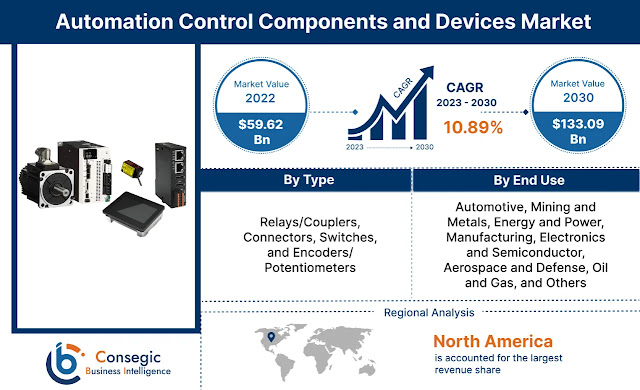Rethinking Comfort: The Fan Coil Unit Market’s Rise in Modern Infrastructure
As demand for flexible, energy-efficient HVAC systems surges, the Fan Coil Unit (FCU) Market is emerging as a vital player in the global indoor climate control landscape. Once confined to commercial applications, FCUs are now making their way into homes, smart buildings, and even modular infrastructure. What’s fueling this shift? A convergence of sustainability mandates, urban densification, and a growing preference for customized thermal solutions. From hotels and hospitals to high-rise apartments and co-working spaces, FCUs are increasingly the system of choice.
2. Market Size and Growth Potential
The global Fan Coil Unit Market was valued at USD 5.20 billion in 2024, with a projected increase to USD 5.36 billion in 2025. By 2032, the market is expected to exceed USD 7.60 billion, expanding at a healthy CAGR of 4.9% from 2025 to 2032.
This growth trajectory reflects not only rising adoption rates across residential and commercial sectors but also deeper investments into sustainable retrofitting, smart HVAC ecosystems, and space-optimized architecture. The shift signals that FCUs are no longer optional—they’re fast becoming foundational in designing future-ready buildings.
3. What’s Driving the Market?
Several forces are shaping this momentum:
-
Technological Innovations: Integration of FCUs with IoT-enabled thermostats, occupancy sensors, and building automation systems.
-
Energy Efficiency Mandates: Regulatory push for energy conservation is encouraging replacement of traditional HVAC systems with high-efficiency FCUs.
-
Urban Space Optimization: FCUs offer compact, ceiling-mountable or wall-mounted options ideal for high-density buildings.
-
Consumer Preference: Demand for zone-based temperature control in residential and mixed-use buildings is driving installations.
4. Drivers, Restraints, and Opportunities
-
Drivers:
-
Growth in real estate and hospitality sectors.
-
Government incentives for energy-efficient building upgrades.
-
Rising adoption of modular HVAC solutions in smart cities.
-
-
Restraints:
-
Initial installation costs remain high.
-
Limited awareness in some emerging markets.
-
Variability in performance depending on building design and system maintenance.
-
-
Opportunities:
-
Expanding retrofit projects in Europe and North America.
-
Digitization trends enabling real-time diagnostics and remote maintenance.
-
Underserved residential segment in Asia-Pacific and Latin America.
-
5. Market Segmentation
By Type:
-
Horizontal FCUs
-
Vertical FCUs
-
Cassette FCUs
By Configuration:
-
Two-Pipe Systems
-
Four-Pipe Systems
By End Use:
-
Residential
-
Commercial
-
Industrial
By Distribution Channel:
-
Direct Sales
-
HVAC Contractors
-
Online Retail
-
Distributors & Wholesalers
These segments help stakeholders dissect the market across functional needs, building structures, and supply channels. Understanding segmentation allows manufacturers and distributors to tailor their offerings to fit specific market demands—be it volume sales in the residential sector or bespoke installations in luxury hospitality.
6. Segmental Opportunities
-
Largest Subsegment: Horizontal FCUs dominate due to their installation flexibility and broad usage in both commercial and residential projects. Their ability to fit into ceiling spaces makes them an industry standard in modern architecture.
-
Fastest-Growing Subsegment: Four-Pipe Systems are gaining traction for enabling simultaneous heating and cooling, particularly in climates with rapid seasonal shifts or buildings with varied zone requirements. Innovation in control systems is further enhancing their appeal.
7. Regional Trends
-
North America: Strong demand from the commercial retrofit market, coupled with DIY culture and early tech adoption. Energy codes across states are driving high-efficiency FCU upgrades.
-
Asia-Pacific: The fastest-growing region, driven by urban expansion, rising income, and large-scale residential developments in countries like China and India. Local manufacturing and cost-effective models boost accessibility.
-
Europe: Prioritizing eco-friendly systems amid climate goals. Compact and low-noise FCUs are gaining favor in apartment living and office conversions across cities like Berlin and Amsterdam.
-
Latin America: Gradual uptake in hospitality and healthcare. Awareness is improving, and government-funded housing projects are beginning to include energy-efficient climate systems.
-
Middle East & Africa: Emerging potential in high-end construction, especially in the Gulf states. High temperatures and a preference for smart cooling systems are driving initial adoption.
8. Challenges and Innovation
Challenges:
-
Cost Sensitivity in low-income markets.
-
Complex Installation Requirements in retrofits.
-
Limited Maintenance Awareness, affecting system lifespan.
Innovations:
-
Modular FCU designs reducing time and complexity of installation.
-
IoT-enabled systems offering predictive maintenance and performance analytics.
-
Eco-materials and R32 refrigerants enhancing sustainability without compromising performance.
These breakthroughs are helping overcome adoption barriers while positioning FCUs as future-proof HVAC solutions.
9. Top Key Players in Fan Coil Unit Market Market are:
Carrier (United States)
Daikin Industries, Ltd. (Japan)
Johnson Controls (Ireland)
Finpower Aircon Systems Pvt Ltd (India)
Trane (Ireland)
Midea Group (China)
LG Electronics Inc. (South Korea)
Haier Group (China)
Williams Comfort Products (United States)
Diffusion Group (United Kingdom)
10. Outlook: What’s Ahead?
The Fan Coil Unit is transitioning from a niche mechanical product to a smart lifestyle enabler. Over the next decade, expect:
-
Wider use of AI for autonomous climate control.
-
Customization at scale, allowing buildings to install units that fit aesthetic and performance requirements.
-
Sustainability-first design, from energy usage to recyclable materials.
In short, FCUs are evolving from being “support systems” to centerpieces of indoor environmental strategy.
11. FAQs Section
Q: What is the current market size and future forecast for the Fan Coil Unit Market Market?
A: The market stands at USD 5.20 billion in 2024 and is projected to reach over USD 7.60 billion by 2032, with a CAGR of 4.9%.
Q: Which segment leads the market?
A: Horizontal FCUs are the largest segment, favored for their versatility and space-saving installation.
Q: Which region shows the fastest growth?
A: Asia-Pacific is the fastest-growing region due to urbanization, population growth, and increased residential construction.
Q: What innovations are driving the market forward?
A: Modular systems, IoT-based control, and sustainable refrigerants are reshaping how FCUs are designed and used.




Comments
Post a Comment